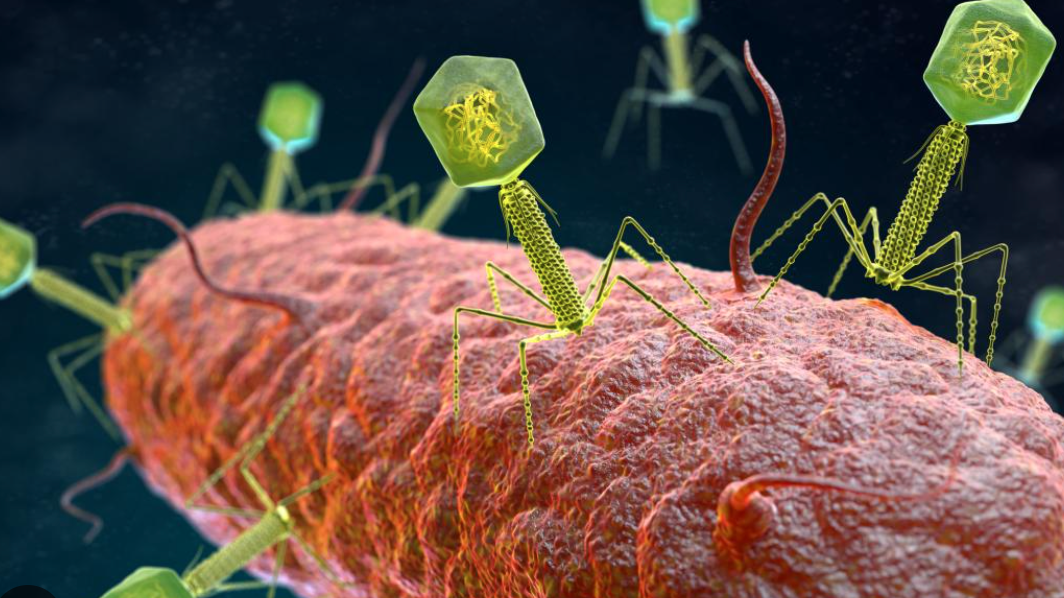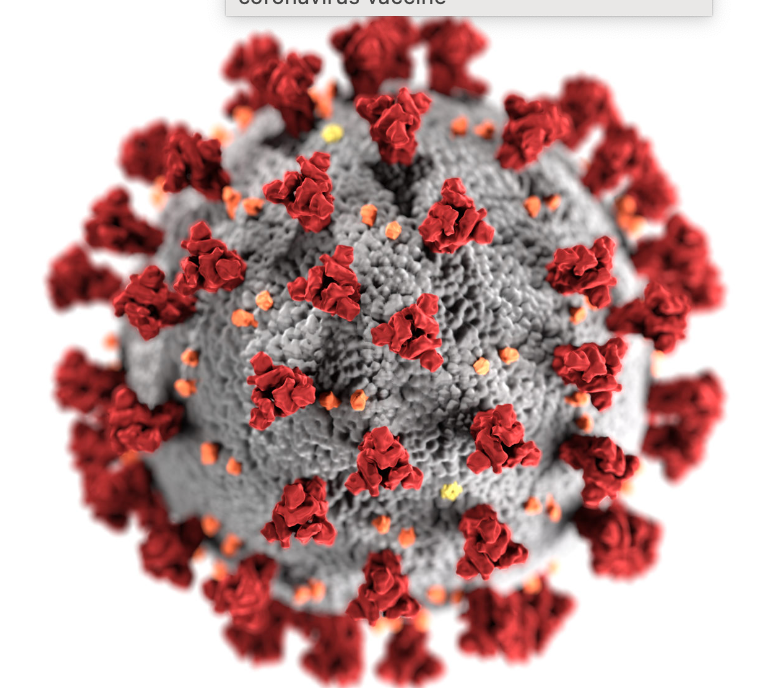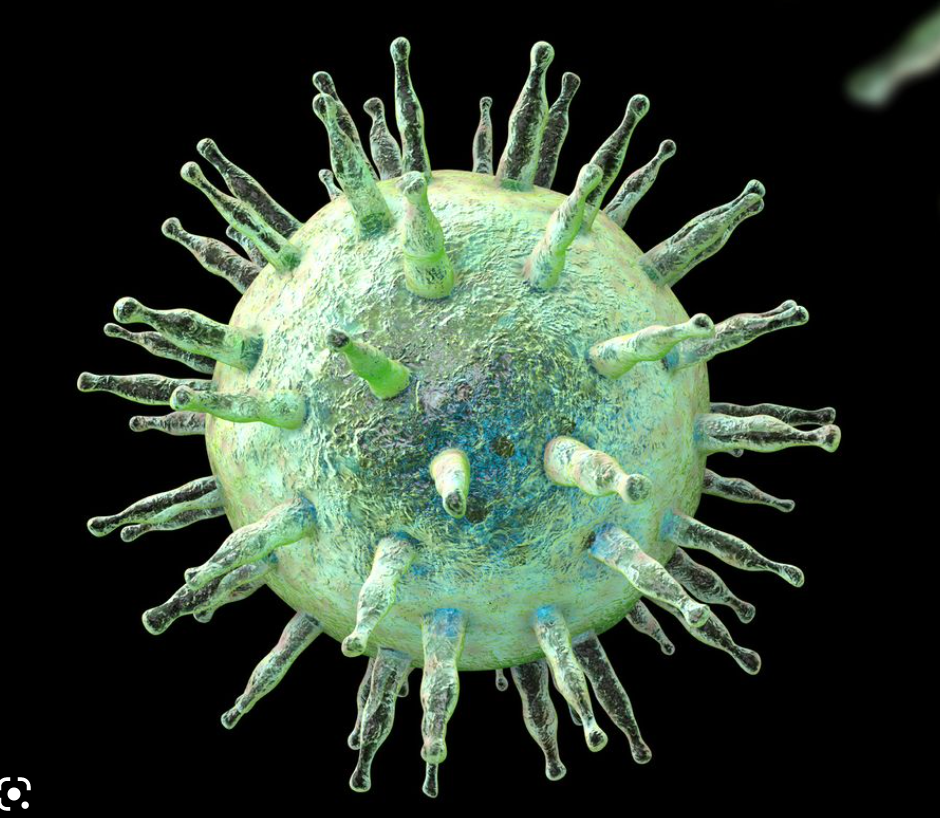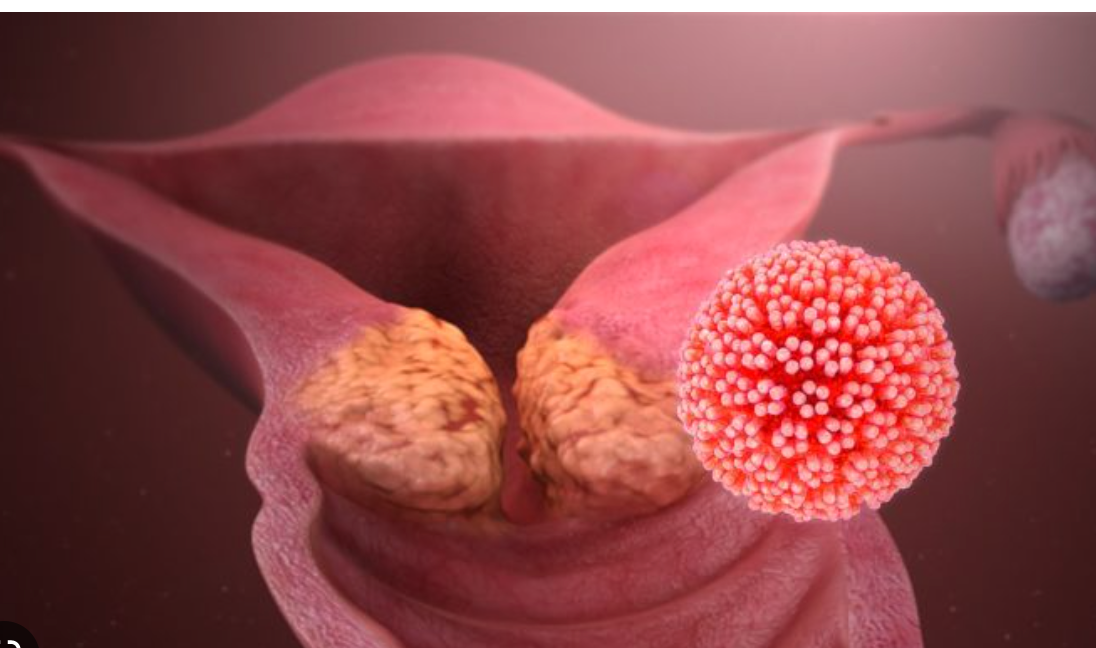MB ch 6 viruses
0.0(0)
0.0(0)
Card Sorting
1/131
Earn XP
Description and Tags
Study Analytics
Name | Mastery | Learn | Test | Matching | Spaced |
|---|
No study sessions yet.
132 Terms
1
New cards

True or False
Viruses contain DNA and RNA.
Viruses contain DNA and RNA.
False
2
New cards
What is bacteriophage
viruses infect bacteria
3
New cards
Whats the term to make new viruses
lytic cycle (lysis-cell death, make new cells)
4
New cards
What is the best phage virus community in human body?
gut virome
5
New cards
What is lytic cycle?
release is a result of cell lysis induced by viral enzymes and accumulation of viruses
6
New cards
what is the first step of lytic cycle/gut virome?
**binding of virus to specific molecules on the host cell**
7
New cards
what is the second step of lytic cycle/gut virome?
**penetration genome enters host cell**
8
New cards
describe virus multiplication 3 step
synthesis of viral proteins and nucleic acids
9
New cards
describe virus multiplication 2 step
entry of viral nucleocapsid
10
New cards
describe virus multiplication 5 step
release of progeny virions
11
New cards
virus meaning in latin
poison
12
New cards
give an example of a virus that has envelope
Lyssavirus - rabies (rabies are given by saliva of an animal)
13
New cards
what kind of viruses has so many enzymes that seems to be evolved from degenerate cells
large asymmetrical viruses
14
New cards

describe the layers of poxviruses
genome has many layers, a core envelope is studded with spike proteins, an outer membrane
large number of accessory proteins that is NEEDED early in viral infection.
\
\
large number of accessory proteins that is NEEDED early in viral infection.
\
\
15
New cards
describe influenza viruses
they are RNA viruses that lack capsid symmetry
instead, the RNA segments are coated with nucleocapsid proteins
instead, the RNA segments are coated with nucleocapsid proteins
16
New cards
does influenza virus have RNA or DNA
RNA
17
New cards
what are the names of two influenza virus spikes
neuraminidase (releases mature virions from the host cell)
hemagglutinin (they bind virions to red blood cells and cause cells to clump together which is known as a process of hemagglutination).
hemagglutinin (they bind virions to red blood cells and cause cells to clump together which is known as a process of hemagglutination).
18
New cards
why viral envelopes are useful and what are they mostly found in
\-used to identify cells
\-involved in viral attachment to host cell
\-may have enzymatic activity
\-its mostly found in animal viruses
\-it could stimulate the immune system
\-involved in viral attachment to host cell
\-may have enzymatic activity
\-its mostly found in animal viruses
\-it could stimulate the immune system
19
New cards
what does the naked nucleocapsid not have
spike and envelope
20
New cards
why the animal viruses requires or necessary to have viral envelope
the two reasons are indispensable: protection & attachment
21
New cards
what does the viral envelope cause to viruses
the viral envelope makes viruses pleomorphic
22
New cards
spikes are also known as
peplomers
23
New cards
what does envelope proteins consist of mostly
glycoproteins (proteins that have carbs attached to them)
24
New cards
what is involved with virion attachment to the host cell surface
spikes
25
New cards
what type of virus shape does adenovirus-272-causes diarrhea and respiratory infections
icosahedral capsid
26
New cards
What type of virus shape does poliovirus-32-causes diarrhea or paralysis?
icosahedral capsid
27
New cards
what are largest animal virus and what is the shape of it
poxviruses (that is the animal virus) and complex
28
New cards
Name the shapes of virus
**helical capsid** (short and rigid, or long and filamentous)
* protects the viral genetic material and aids in transfer between host cells
* length of capsid is a function of nucleic acid
* the structure of it is that its repeating molecules that looks like crystalline
* Hep A, Polio, Flu, __TMV__
**icosahedral capsid** (spherical, 20 flat triangles)
* symmetric polygons
* knob shaped units, can vary in numbers and arrangement of promoter
* Poliovirus-32-causes diarrhea or paralysis
* adenovirus - 272- causes diarrhea and respiratory infections
**complex** (vary in shape)
* large bacteriophages - binal symmetry meaning the head and tail segments each are symmetric
* asymmetric: poxviruses - largest animal virus
* protects the viral genetic material and aids in transfer between host cells
* length of capsid is a function of nucleic acid
* the structure of it is that its repeating molecules that looks like crystalline
* Hep A, Polio, Flu, __TMV__
**icosahedral capsid** (spherical, 20 flat triangles)
* symmetric polygons
* knob shaped units, can vary in numbers and arrangement of promoter
* Poliovirus-32-causes diarrhea or paralysis
* adenovirus - 272- causes diarrhea and respiratory infections
**complex** (vary in shape)
* large bacteriophages - binal symmetry meaning the head and tail segments each are symmetric
* asymmetric: poxviruses - largest animal virus
29
New cards
is virus DNA or RNA protected unlike bacteria
the viral envelope protects it which is protein casing
30
New cards
Are viruses able to metabolize or reproduce on their own
they need a host to do that, specifically hosts ribosomes and enzymes and other crucial cellular components
31
New cards
bacteriophage means
a virus that infects bacteria
32
New cards
what is a helical caspid
its a flexible helix of capsomers that form cylindrical nucleocapsid
33
New cards
capsid + nucleic acid=
=nucelocapsid
34
New cards
whats the function of capsid
to protect the any chemicals or enzymes
35
New cards
define virion
complete infectious viral particle which is the DNA or RNA of a virus that is protected by capsid - capsomers
36
New cards
what do animal viruses must involve for insertion of spike proteins?
secretory pathway
rER→Golgi complex → plasma membrane
rER→Golgi complex → plasma membrane
37
New cards
describe virus multiplication 4 step
self assembly of virions(assembly is complicated)
38
New cards
describe virus multiplication 1 step
the virus particle comes in contact with host cell - attachment of virion to host cell
39
New cards
What are the five steps of virus multiplication
attachment, entry and uncoating, synthesis, assembly, virion release
40
New cards
Which of the following is a protein molecule, while others are viruses.
\-poxvirus 250nm
\-herpes simplex 150nm
\-rabies 125 nm
\-HIV 110nm
\-Influenza 100nm
\-adenovirus 75nm
\-hemoglobin molecule 15nm
\-T2 bacteriophage 65nm
\-poliomyelitis 30nm
\-yellow fewer 22nm
\-poxvirus 250nm
\-herpes simplex 150nm
\-rabies 125 nm
\-HIV 110nm
\-Influenza 100nm
\-adenovirus 75nm
\-hemoglobin molecule 15nm
\-T2 bacteriophage 65nm
\-poliomyelitis 30nm
\-yellow fewer 22nm
hemoglobin molecule
41
New cards
infectious agents are:
not dead cells or alive, active or inactive, (extracellular or intracellular) come in contact with host cell, wear mask to protect against infection.
42
New cards
Why is the. Tulip Breaking News important
because it destroyed the Dutch economy, “bitcoin of the 1600s”, wealthy merchants put humble tulip worth 1636 tulip bulb 150$=25,000$ in todays currency. **the virus made tulips more valuable**
virus damaged the colorful tulips pigmentation, economic was brought down,
tulips are originally from Kazakhstan, bulbs (stem, reshesh) were worth far more than bloomed flowers
virus damaged the colorful tulips pigmentation, economic was brought down,
tulips are originally from Kazakhstan, bulbs (stem, reshesh) were worth far more than bloomed flowers
43
New cards
what is the third step of lytic cycle/gut virome?
**uncoating - the viral nucleic acid is released from the capsid**
44
New cards
what is the fourth step of lytic cycle/gut virome?
**synthesis - the viral components are produced**
45
New cards
what is the fifth step of lytic cycle/gut virome?
**assembly - new viral particles are constructed**
46
New cards
what is the sixth step of lytic cycle/gut virome?
assembled viruses are released by budding (exocytosis) or cell lysis,
47
New cards
how specific is adsorption? can there be more than one receptor
receptors are proteins that are important to normal cellular function and there may be more than one receptor
48
New cards
DdDPs funtion
to replicate DNA
49
New cards
Which best describes prion?
1\.Parasite that depends on helper non-cellular organism for replication
2\. Naked RNA infectious agent
3\. Encapsidated infectious agent that replicates only inside living cells
4\. Non-nucleic acid containing infectious agent
1\.Parasite that depends on helper non-cellular organism for replication
2\. Naked RNA infectious agent
3\. Encapsidated infectious agent that replicates only inside living cells
4\. Non-nucleic acid containing infectious agent
4
50
New cards
Which best describes viroid?
1\.Parasite that depends on helper non-cellular organism for replication
2\. Naked RNA infectious agent
3\. Encapsidated infectious agent that replicates only inside living cells
4\. Non-nucleic acid containing infectious agent
1\.Parasite that depends on helper non-cellular organism for replication
2\. Naked RNA infectious agent
3\. Encapsidated infectious agent that replicates only inside living cells
4\. Non-nucleic acid containing infectious agent
2
51
New cards
Which best describes virusoid?
1\.Parasite that depends on helper non-cellular organism for replication
2\. Naked RNA infectious agent
3\. Encapsidated infectious agent that replicates only inside living cells
4\. Non-nucleic acid containing infectious agent
1\.Parasite that depends on helper non-cellular organism for replication
2\. Naked RNA infectious agent
3\. Encapsidated infectious agent that replicates only inside living cells
4\. Non-nucleic acid containing infectious agent
1
52
New cards
Which best describes virus?
1\.Parasite that depends on helper non-cellular organism for replication
2\. Naked RNA infectious agent
3\. Encapsidated infectious agent that replicates only inside living cells
4\. Non-nucleic acid containing infectious agent
1\.Parasite that depends on helper non-cellular organism for replication
2\. Naked RNA infectious agent
3\. Encapsidated infectious agent that replicates only inside living cells
4\. Non-nucleic acid containing infectious agent
3
53
New cards
DdRPs function:
to transcribe RNA (remember R one is rna so it transcribes the DNA)
54
New cards
Intestinal lumen contains
bacteria and phages
55
New cards
Does the virus kill the host when it synthesizes and make replication of its genome
no because it benefits using the, lysogeny, although phage genes in bacterial chromosomes could cause pathology like HPV
56
New cards
Does animal virus have enveloped or naked nucleocapsid virus?
enveloped
57
New cards
which part of the body would hepatitis B infect
host range:human liver cells
58
New cards
what tissue does HIV affect
host range: CD4 and CCR5 proteins on WBC
59
New cards
what receptors does covid-19 affect
ACE2
60
New cards
what does the virus genome do upon entry
it alters the genetic expression of the host and instructs it to synthesize the building blocks for new viruses
61
New cards
How many human proteins does HIV depends on to complete its cycle
250 human proteins
62
New cards
how do non enveloped viruses lyse the host cell of bacteria,
bacteriophage
holin: create holes in E.coli plasma membrane, enabling T4 lysozyme to move from the cytoplasm to the peptidoglycan
lysozyme: an enzyme that attacks peptidoglycan in host cell wall
holin: create holes in E.coli plasma membrane, enabling T4 lysozyme to move from the cytoplasm to the peptidoglycan
lysozyme: an enzyme that attacks peptidoglycan in host cell wall
63
New cards
how do non enveloped viruses lyse the host cell of eukaryotes
viral proteins may attack cell wall or membrane
\
\
64
New cards
65
New cards
host cell damage or cytopathic effects:
a. shutdown of normal metabolic and genetic machinery
b. destruction of plasma membrane
c. toxicity or viral components
d. release of lysosomes
e. all of the above
a. shutdown of normal metabolic and genetic machinery
b. destruction of plasma membrane
c. toxicity or viral components
d. release of lysosomes
e. all of the above
E.
66
New cards
describe what are some cytopathic effects
virus induced damage to cells, changes it shape and size, cell lysis, alters DNA, transform cells into cancerous cells, inclusion bodies, cells fuse to form multinucleate cells (syncytia, I think multiple nucleus)
67
New cards
what is the meaning of cytopathic cells
what happens to cell when the virus gets in
68
New cards
which of the following is a step found in animal virus multiplication but not in bacteriophage replication?
A. Adsorption
B. Penetration
C. Assembly
D. Uncoating
E. Release
A. Adsorption
B. Penetration
C. Assembly
D. Uncoating
E. Release
D.
69
New cards
what is the structure of archaea cell envelope
a monolayer membrane with ether linked lipids and proteinaceous S layer
70
New cards
how does enveloped viruses leave the host cell, host cell:release virions
by **budding** - exocytosis which is when nucleocapsid binds to membrane which pinches off and sheds the virus **gradually**, cell is not immediately destroyed
\-plasmic membrane, Golgi, nucleus, ER
could take few hours
host cell accrues (build up, accumulate) damage
most envelopes arise from plasma membrane
\
\-plasmic membrane, Golgi, nucleus, ER
could take few hours
host cell accrues (build up, accumulate) damage
most envelopes arise from plasma membrane
\
71
New cards
What are the stages for viral synthesis (gene replication)
early: host control
middle:genome replication
late:viral components synthesized, and virions assembled
\
middle:genome replication
late:viral components synthesized, and virions assembled
\
72
New cards
where would the site of synthesis (replication and protein production) would take place if the virus is RNA?
must bring in enzymes/proteins necessary to complete synthesis
73
New cards
where would the site of synthesis (replication and protein production) would take place if the virus is DNA? (dsDNA typical flow)
generally replicated and assembled in the nucleus
74
New cards
negative sense
RNA must be converted into positive sense message,
75
New cards
what are the medical importances of viruses
\-viruses are the most common cause of acute infections
\-several billion viral infections per year
\-some viruses have high mortality rates (N1H1, HIV, AIDS, etc)
\-possible connections of viruses to chronic afflictions of unknown cause (schizophrenia, chronic fatigue syndrome, multiple sclerosis)
\-viruses are major participants in the earths ecosystem
\-COVID-19 rates has decreased, increased in jan 2021 and jan 2022
\-several billion viral infections per year
\-some viruses have high mortality rates (N1H1, HIV, AIDS, etc)
\-possible connections of viruses to chronic afflictions of unknown cause (schizophrenia, chronic fatigue syndrome, multiple sclerosis)
\-viruses are major participants in the earths ecosystem
\-COVID-19 rates has decreased, increased in jan 2021 and jan 2022
76
New cards

epstein-Barr virus
Burkitts lymphoma
77
New cards

papillomavirus
cervical cancer
78
New cards
what is transformed cells
they have increased rate of growth, alternations in chromosomes, and the capacity to divide for indefinite time periods resulting in tumors
79
New cards
mechanism of oncogenesis include:
a. insertion of an oncogene into the host genome
b. providing strong regulatory sequences
c. insertion of viral genome knocks out **tumor suppressor genes**
d. expression of viral proteins that interfere with host cell cycle regulation
e. all of the above
a. insertion of an oncogene into the host genome
b. providing strong regulatory sequences
c. insertion of viral genome knocks out **tumor suppressor genes**
d. expression of viral proteins that interfere with host cell cycle regulation
e. all of the above
E.
80
New cards
Which of the following is true about viruses. Multiple answers
a. Made up of only proteins
b. mainly cause neurodegenerative diseases
c. an infective agent thats able to multiply only within the living cells of host
d. It is made up of nucleic acid molecule covered by a protein coat called nucleocapsid
e. can cause a wide variety of infections
\
a. Made up of only proteins
b. mainly cause neurodegenerative diseases
c. an infective agent thats able to multiply only within the living cells of host
d. It is made up of nucleic acid molecule covered by a protein coat called nucleocapsid
e. can cause a wide variety of infections
\
C, D, E
81
New cards
Which of the following is true about prions? Multiple answers
A. a very simple particle that can infect other living cells
B. less complex even than a virus
C. made up of only proteins
D. its an infective agent that has nucleic acid and a protein coat
E. its an infectious protein that lack nucleic acid
F. mainly cause neurodegenerative diseases.
\
\
A. A, B, C, E
B. A, B, C, F
C. B, C, E, F
D. B, C, D, F
E. B, C, A, F
A. a very simple particle that can infect other living cells
B. less complex even than a virus
C. made up of only proteins
D. its an infective agent that has nucleic acid and a protein coat
E. its an infectious protein that lack nucleic acid
F. mainly cause neurodegenerative diseases.
\
\
A. A, B, C, E
B. A, B, C, F
C. B, C, E, F
D. B, C, D, F
E. B, C, A, F
C.
82
New cards
why viruses in ecology is important
a. viruses are important members of aquatic world.
b. move organic matter from particulate to dissolved
c. important in evolution
d. transfers genes between cells at 20 billion/sec
e. driving bacterial and algal mortality and evolution at the nanoscale, to influencing global-scale biogeochemical cycles and ocean productivity
f. all of the above
a. viruses are important members of aquatic world.
b. move organic matter from particulate to dissolved
c. important in evolution
d. transfers genes between cells at 20 billion/sec
e. driving bacterial and algal mortality and evolution at the nanoscale, to influencing global-scale biogeochemical cycles and ocean productivity
f. all of the above
F. all of the above
83
New cards
state the two theories regarding viruses
\-cells that may have regressed (fall off) to a highly parasitic existence inside other cells
\-may have originated from loose strands. of genetic material released by cells (early evolutionary state)
\-may have originated from loose strands. of genetic material released by cells (early evolutionary state)
84
New cards
What type of cells does virus infects?
\
\
bacteria, algae, fungi, protozoa, plants, and animals
85
New cards
where do viruses acquire their envelope lipids and carbs
from their host
86
New cards
what is viruses envelope proteins coded by
viral genes
87
New cards
many human cancers are caused by
a. unhealthy diet
b. healthy family genes
c. sweets and sugar
d. oncogenic virus
a. unhealthy diet
b. healthy family genes
c. sweets and sugar
d. oncogenic virus
D. because oncogenic viruses **transform** the host cell to become cancerous
88
New cards
virus - response in animal cell
1\.smallpox virus
2\.herpes simplex
3\.adenovirus
4\.poliovirus
5\.reovirus
6\.influenza virus
7\.rabies virus
8\.measles virus
1\.smallpox virus
2\.herpes simplex
3\.adenovirus
4\.poliovirus
5\.reovirus
6\.influenza virus
7\.rabies virus
8\.measles virus
1. cells round up; inclusions appear in cytoplasm
2. cells fuse to form multi-nucleated syncytia; nuclear inclusions
3. clumping of cells; nuclear inclusions
4. cell lysis; no inclusions.
5. cell enlargement; vacuoles and inclusions in cytoplasm
6. cells round up; no inclusions
7. no change in cell shape; cytoplasmic inclusions (negri bodies.
8. syncytial form (multinucleate)
89
New cards
90
New cards
Which is smaller viruses or viroids or prions
smallest to greatest
prions-viroids-virus
prions-viroids-virus
91
New cards
true or false
viruses can be extracellular or intracellular
viruses can be extracellular or intracellular
true
92
New cards
positive sense
RNA contains message for translation, viral + mRNA is translated to viral protein
93
New cards
where do RNA viruses generally replicated and assembled
in the cytoplasm
94
New cards
where is viruses or viral replication complex present
in the cytoplasm
95
New cards
describe the synthesis: viral genome part
genomes can be segmented or circular (ex:influenza vs.HepBV), there is overlapping transcription, no metabolic enzymes, number of genes vary (ex: flu - 10 genes, vaccine virus - 250 genes), length of nucleic acid also vary.
\
For host cell regulation, synthesis of capsid, genetic material, and packing of virions
\
For host cell regulation, synthesis of capsid, genetic material, and packing of virions
96
New cards
during synthesis is the virus ever DNA and RNA
its either dna or rna but never both
97
New cards
in 1971 what did David Baltimore propose to distinguish viruses
based on its genome composition (rna or dna), the route used to express messenger RNA (mrna) and mechanism of replication
98
New cards
how did the ICTV classified viruses
a. based on shape and size
b.genome composition
c. based on its DNA
d. capsid symmetry
e. envelope
f. size of virion
g. host range
a. based on shape and size
b.genome composition
c. based on its DNA
d. capsid symmetry
e. envelope
f. size of virion
g. host range
B, D, E, F, G
99
New cards
how does penetration/uncoating affect the cell membrane
in three methods **endocytosis** which is when the entire virus is engulfed and enclosed in a vacuole or vesicle
and **fusion** which is when envelope merges directly with membrane resulting in nucleocapsids entry into cytoplasm
**injection of nucleic acid**
and **fusion** which is when envelope merges directly with membrane resulting in nucleocapsids entry into cytoplasm
**injection of nucleic acid**
100
New cards
what tissues of host range does measles affect
receptors widespread